Many Short Games: Part the Second
Welcome to Many Short Games: Part the Second. Someone on the U-Con Community Facebook page (not to be confused with the U-Con Convention Facebook page) asked about games for kids in the Games Library (there are quite a few) so I looked to see if I had enough games for kids which were also short games to fill a post. It turns out that I do. “Kids games” are defined as games with a minimum age of 4 or 5.
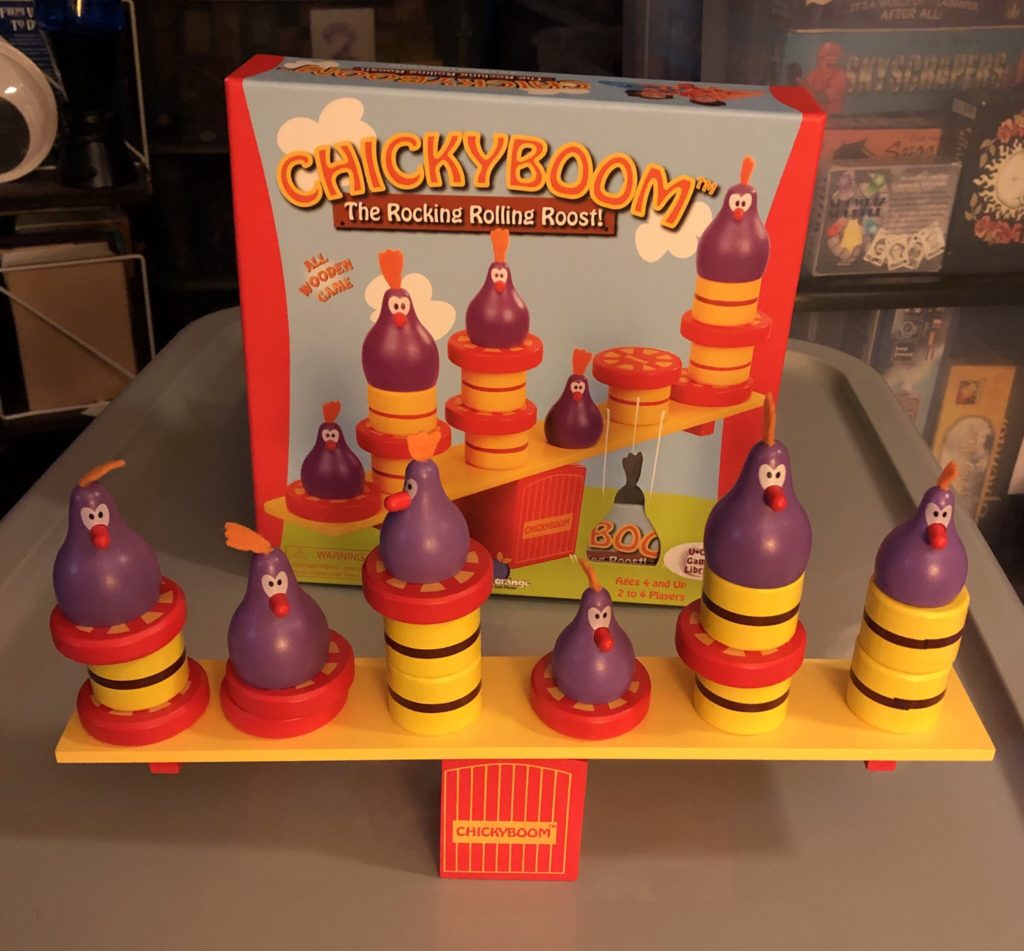
Chickyboom (Blue Orange Games): This game is not only an excellent kids game, it can be played by any number of adults who have had any number of rum and cokes. Really, it’s kind of a fun game for everyone providing you like dexterity type games. The set up is pretty simple: with the long plank on a flat surface, stack the chickens, bales of hay and wagon wheels in any order (except that you can’t stack anything on top of the chickens, sadly. Other than that, stack as you will). Lift the plank up to the fulcrum and balance it. Then spend the rest of the game taking pieces off the plank without unbalancing all the other pieces. Add up the points of the pieces you managed to liberate and whoever has the most points wins.
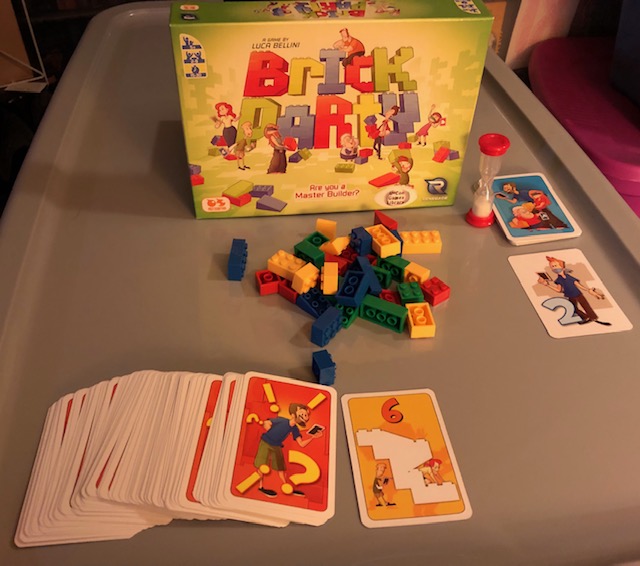
Brick Party (Renegade Game Studios): Brick Party is played in teams consisting of an Architect and a Builder. The Architect picks a build card that has an outline of a shape and a point value of the shape once it’s built correctly. The Builder, without being able to see the build card, takes verbal instruction from the Architect on which pieces to pick and how to put them together. Once one team believes they have their shape built, the rest of the teams have 30 seconds to complete their shapes. There are also Rules cards which make the game a little harder (Builder can only use their off hand, Architect can’t speak, Builder has to use all the colors, etc.) but garner you more points if you manage to build your shape according to the Rule. Plus, you are playing a game with Legos. How cool is that?
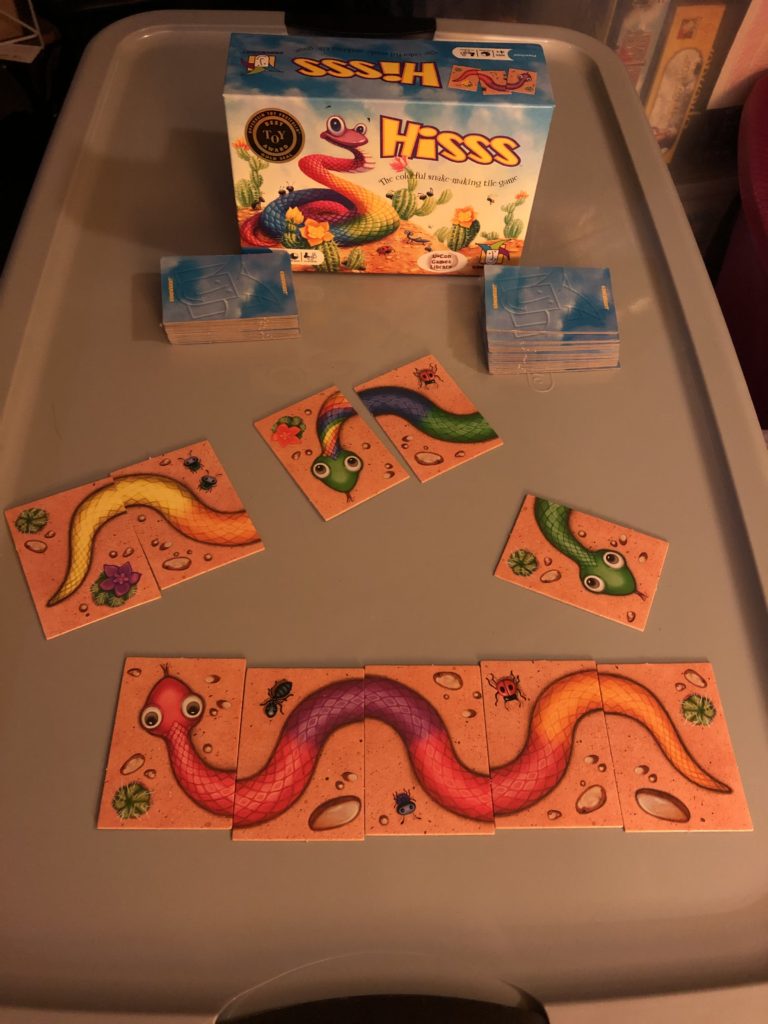
Hisss (Gamewright): This is a color matching game where you build snakes according to the colors on the cards. Each person takes a turn drawing a snake card and either matching it to a section already on the table (the cards don’t have to line up to match a color) or, if there are no sections to match, starting another snake. When you cap a snake (by adding a head or a tail to a snake that already had the other one and at least 1 middle section) you get to put the finished snake in your score pile. Play ends when the last card is drawn and played. All the complete snake cards are counted and the person with the most cards wins.
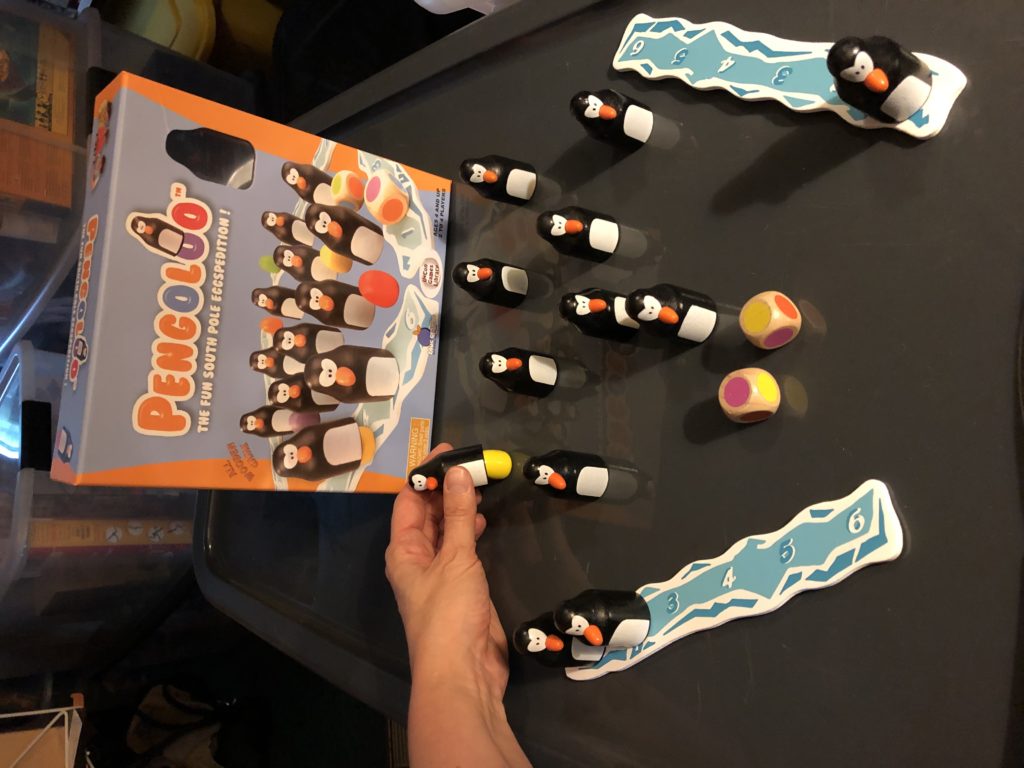
Pengoloo (Blue Orange Games): Pengoloo is basically a concentration type game. The game starts by arranging all the penguins sitting on their eggs in the center of the game area. Each penguin has a colored egg, which you can see if you lift the penguin up a little – sort of the penguin equivalent of flipping over cards. Players take turns rolling the dice that have color spots representing all the different egg colors and then trying to find a penguin that is sitting on that color egg. If you do, then you get to take that penguin and egg out of play and put it on your scorecard. If you don’t find a match in two tries, the next player gets to go with new knowledge of what color eggs are under those penguins. The first person to match 6 eggs wins. This particular game, along with Chickyboom from the same company, comes with wooden pieces that feel quite nice and have a solid heft. Also, there is an advanced version of this game where you can choose your egg match from a player’s scorecard penguins. The South Pole just got tricksey!
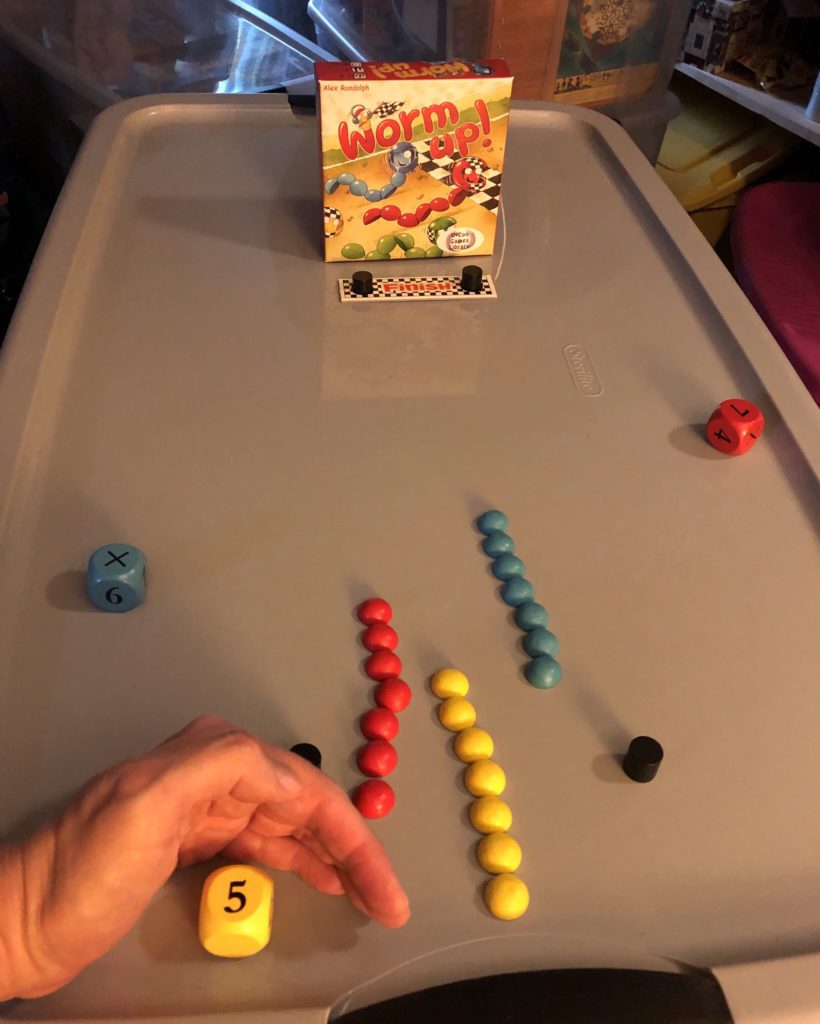
Worm Up! (Eagle-Gryphon Games): This is one of those silly fun little games. Everyone chooses a worm color and lines their worm segments up behind a “start” line (two round pillars that mark the start area). They then take a die in their worm’s color and secretly bid a number from the face of the die (4,5,6,7,X). If nobody bids the same number as you, you get to move your segments that many spaces closer to the finish line by leapfrogging the segments tail to head (or head to tail if you need to back up). If two or more people bid the same number, neither player gets to go that round. Wash rinse repeat, except that you can’t bid the same number two times in a row if you successfully got to move. But what about the X? You can choose the X to represent any of the numbers (but if someone else bids that number you don’t get to play) and you also get to pivot the finish line on one of its pillars, making it harder for the lead worm to cross.
